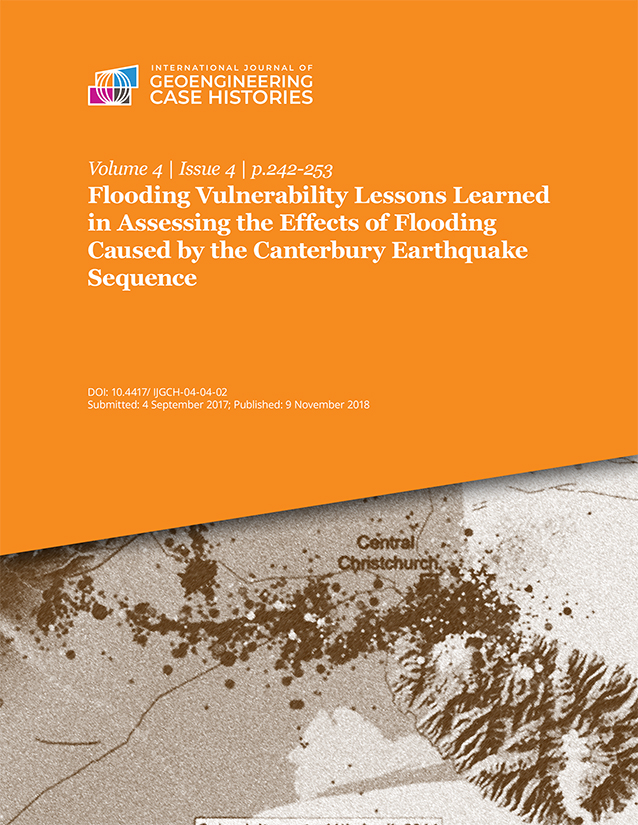Flooding Vulnerability Lessons Learned in Assessing the Effects of Flooding Caused by the Canterbury Earthquake Sequence

Volume 4 – Issue 4
Authors: Mark C. N. Taylor ; T. S. R. Fisher ; K. K. S. Ng ; M. Pennington
Keywords
Flooding, Earthquakes, Flood modelling, Insurance, Canterbury Earthquake Sequence
Abstract
The Canterbury Earthquake Sequence (2010 – 2011) caused significant damage and loss of life in Christchurch, New Zealand. The Earthquake Commission (EQC) is New Zealand’s public insurer for natural disaster damage. EQC determined that a new, claimable form of land damage had resulted due to the Increased Flooding Vulnerability (IFV) caused by the subsidence of the land changing the flood risk to residential properties. Tonkin & Taylor Ltd (T+T) on behalf of EQC had by early 2016 completed engineering assessments of over 11,000 residential properties in Canterbury. The purpose of the assessments was to understand and quantify the effects on residential properties of IFV caused by the Canterbury Earthquake Sequence. The completion of these assessments has involved over 75,000 man-hours and is the culmination of 5 years of data collection, policy and methodology development, legal and peer review. This paper examines some of the engineering challenges and how they were dealt with. It also considers what lessons could be learned if the process was to be repeated.




